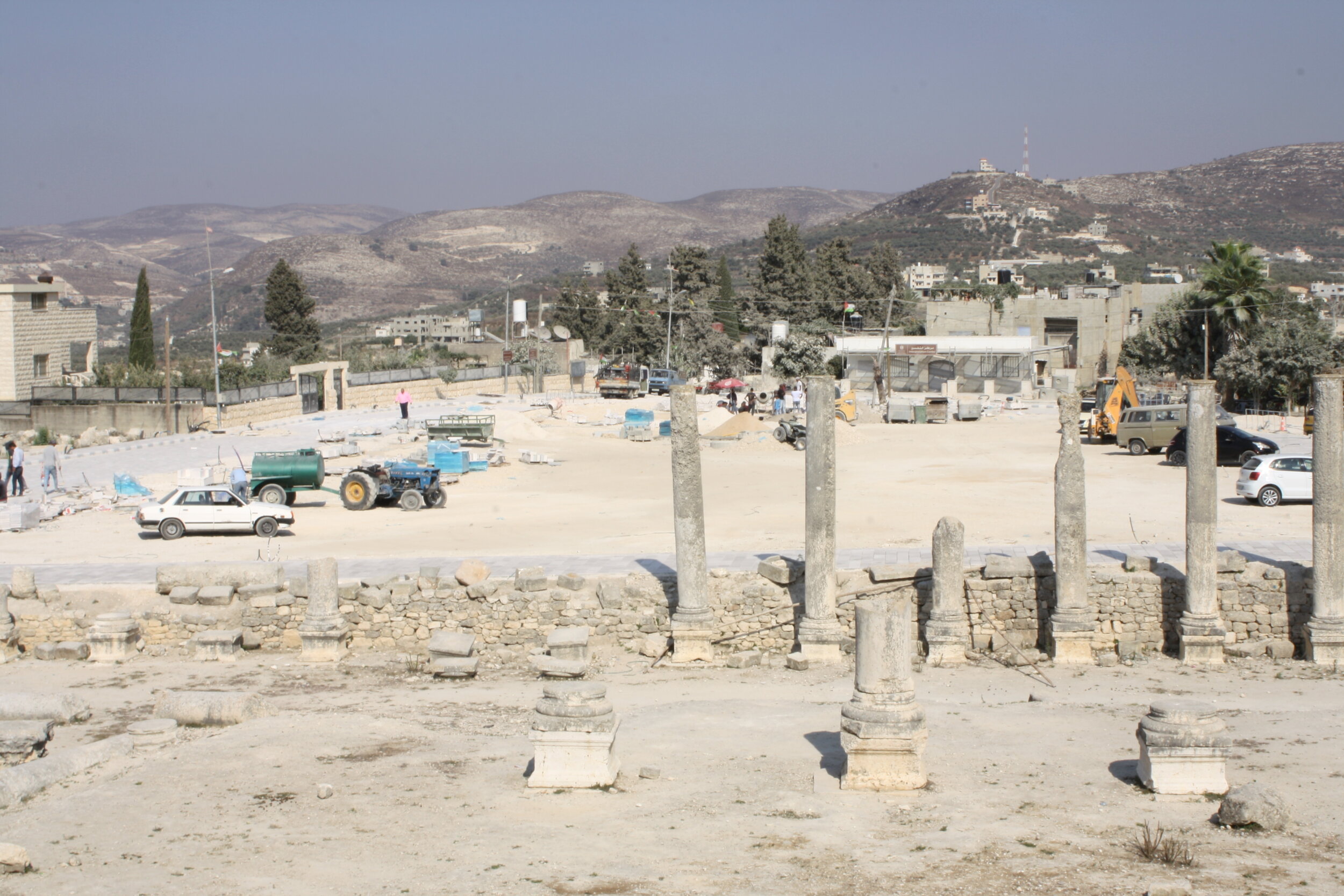Depth Unknown is a project that brings together architects, artists, archaeologists and anthropologists, to map the architectural imaginary of the constantly shifting Palestinian ground, making visible disregarded strata, displaced objects, and the entangled narratives of Palestine.
Under the foot of a settler-colonial project that imagines itself as ever-expanding on the surface and under the ground, the land of Palestine is prevented from speaking its own truth. This history of silencing had begun before the onset of the Zionist project, when Palestine was caught in the crossfire of Imperialist interests and religious narratives, and was “mapped back” onto the Biblical, Judaeo-Christian Holy Land. Since the last decades of the 19th century, the Western Imperial powers deployed archaeologists and geographers to find on the ground material proof of the stories contained in the Bible. Zionist and Israeli archaeologists worked in the same direction, exploiting the scriptural narratives and archaeological materials to buttress their settler-colonial claim onto Palestine. For more than one century, the ground of Palestine was excavated and re-filled, the artefacts lying in its soil displaced to warehouses and museums, often outside of the country. Palestine was moulded and re-morphed through the forceful transformation of its ground and its landscape; Imperial and settler voices superimposed themselves over millennia of historical stratification, simplifying complexities and flattening out thick entanglements. But what would the ground of Palestine say, if it were allowed its own, independent voice?
Learn more about us →
The Site: Sebastia
learn more about our project →
Sanctified monuments,
discarded shards, and
the voids left by missing objects.
The majestic colonnade that outlined the Roman forum of the city is the first thing that the eye of the visitor approaching Sebastia encounters. Lying in a corner, the frame of a football goal signals that the archaeological site is alive.
The columns of the forum are only one of the many, impressive monuments that characterise the archaeological site of Sebastia: the Roman theater, the Hellenistic watchtower, the Temple of Augustus, the Basilica of St. John the Baptist. Only the few look at the ground, a blend of dust and ancient pottery shards discarded by the archaeologists during their excavations. Below the ground, instead, ancient cisterns and vaults that the dirt used to refill the excavation trenches could only partially saturate, and the intangible voids left by the many artefacts taken to warehouses and museums: a hollowed landscape, full of echoes and longing.
Israeli settlers from the neighboring settlement Sheve Shemron arrive for a religious tour of Sebastia carrying machine guns. The Israeli government encourages settlers to tour sites beyond the Green Line during religious holidays.
The excavations that transformed the Palestinian agricultural hill of Tell Sebastia in the archeological site visible today were conducted in the beginning of the 20th century by American, British and Zionist immigrant scholars. The archaeologists identified the earlier monumental remains as the palace of Biblical King Omri, and the site as the city of Samaria (Shomron). In spite of the fact that the majority of Sebastia’s landmarks date to the Hellenistic and Roman Period, the role of Sebastia in the Biblical narrative was the prime driver for the excavations, and for the current transformations in the site.
Today, there are fresh excavator marks on the slopes of the hill, and the site is undergoing landscaping work to transform it into a tourist attraction, catered for the Israeli Jewish public. Soon after the end of the Six-day War of 1967, Sebastia, like all other archeological sites in the Occupied West Bank, was declared an Israeli National Park, and after the Oslo Accords of 1993, the archaeological area was classified as under total Israeli control (Area C). In recent years, settlers inhabiting the colonies of the Occupied territories have begun weekly tours to the archaeological site, in which they re-enact the stories that the Bible sets in the city of Samaria.
But what does the ground of Sebastia say of itself?
Excavation campaigns in Sebastia:
1) Harvard Expedition (1908-1910)
2) Joint Expedition (1931-1935)
3) Department of Antiquities of Jordan (1965, 1967)
4) British School of Archaeology in Jerusalem (1968)




